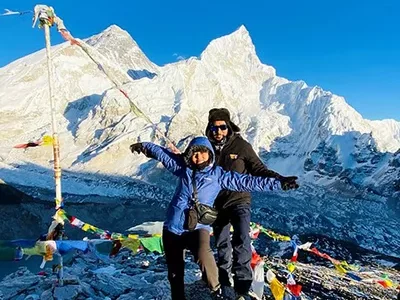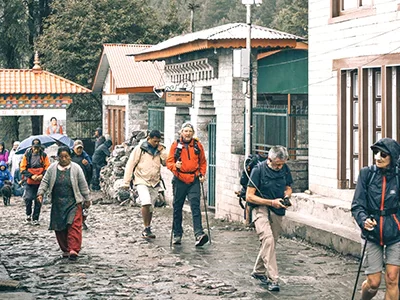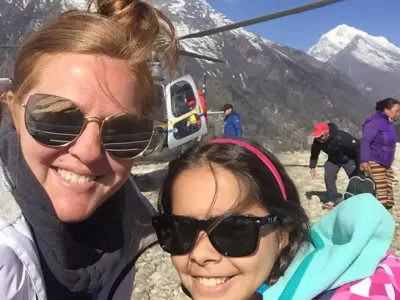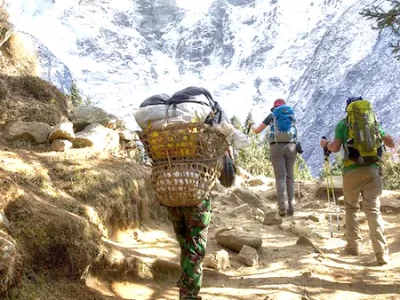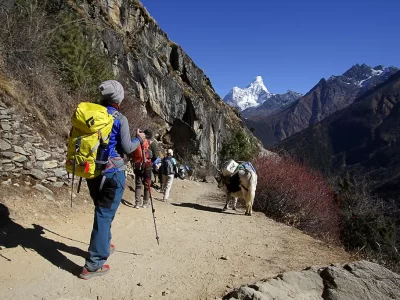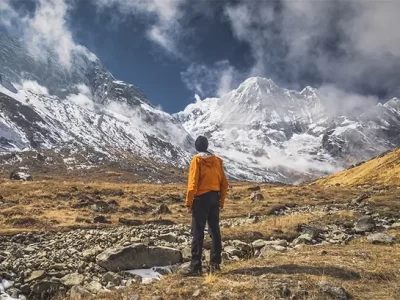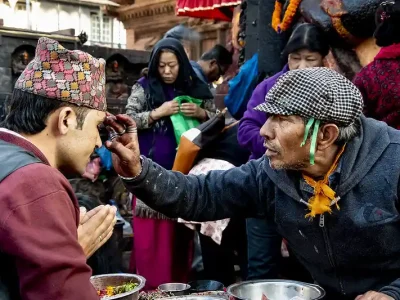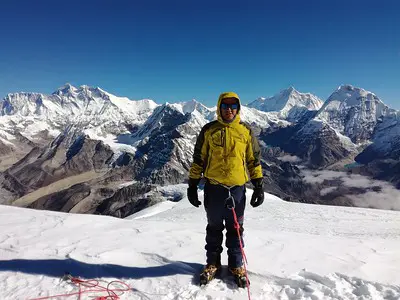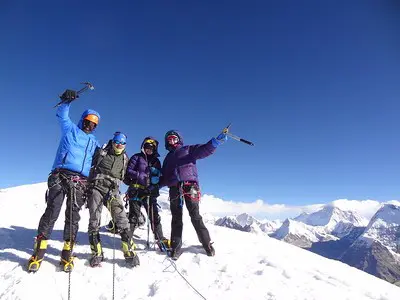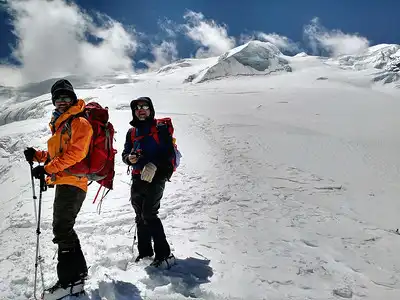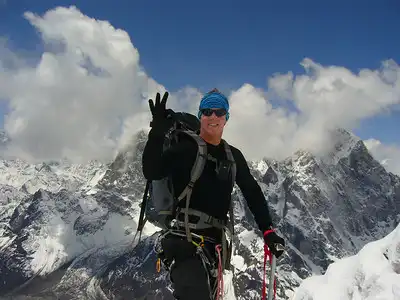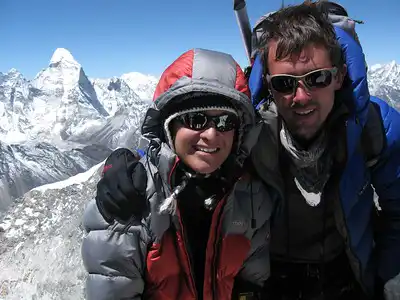Namche Bazaar, often called the gateway to Everest, is more than just a quaint town in the Himalayas. It serves as a crucial hub for acclimatization and preparation for trekkers aiming to conquer the world’s highest peak. At a lofty Namche Bazaar altitude of 3,440 meters, it offers rest and replenishment before the more challenging parts of the trek. This bustling town, rich in culture and surrounded by breathtaking landscapes, is a vital and vibrant part of any Everest expedition.
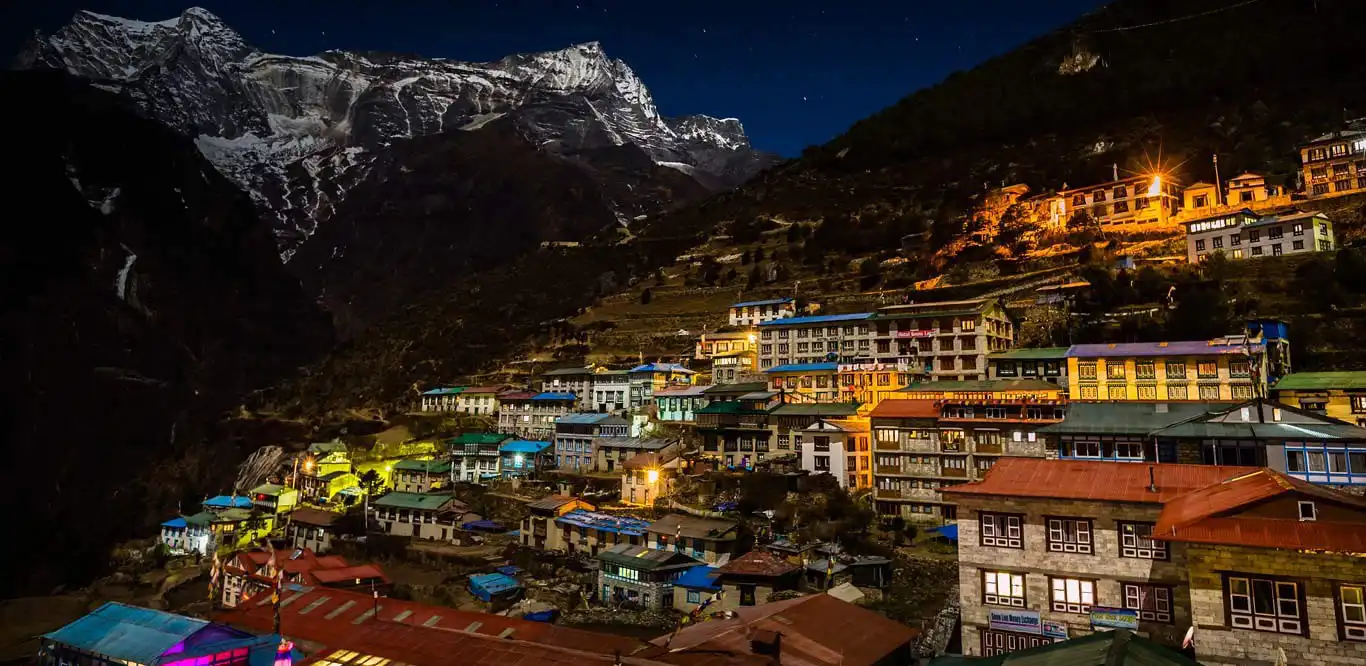
Namche Bazaar in Nepal sits at the heart of the Khumbu region and plays a central role in Nepal’s trekking infrastructure. The trek from Lukla to Namche Bazaar provides adventurers with scenic views of the Himalayas. Upon arrival, visitors find a wide range of accommodations, from cozy teahouses to upscale hotels in Namche, catering to every traveler’s needs. This accessibility makes Namche Bazaar an essential stop for acclimatization and last-minute preparations before heading up to Everest Base Camp.
The town offers many activities and sights integral to the trekker’s experience in Nepal. From the breathtaking Everest view from Namche Bazaar to the vibrant local market, there is plenty to explore. Trekkers can enjoy local cuisine, engage with Sherpa culture, and take short hikes around the area, such as the Namche Bazaar trek to the nearby Khumjung village. The variety of things to do in Namche Bazaar ensures that time spent here is both restful and enriching, providing a deeper connection to the natural and cultural heritage of this iconic region.
Although it is a standard stopover location, Namche Bazaar offers much more depth and excitement. Here is a list of the Top Things to Do in Namche Bazaar:
Everest Base Camp Trek
Luxury Everest Base Camp Trek
Everest Base Camp Trek with Helicopter Return
1. Sherpa Culture Museum
The Sherpa Culture Museum houses an awesome range of displays that bring out a very deep meaning about the rich cultural heritage and history of the Sherpas. The exhibition of Sherpas’ artifacts, traditional clothes, and tools allows visitors to gain a profound understanding of their lifestyle. It shows how the Sherpa commoners carry out their daily activities and stick to their customs.
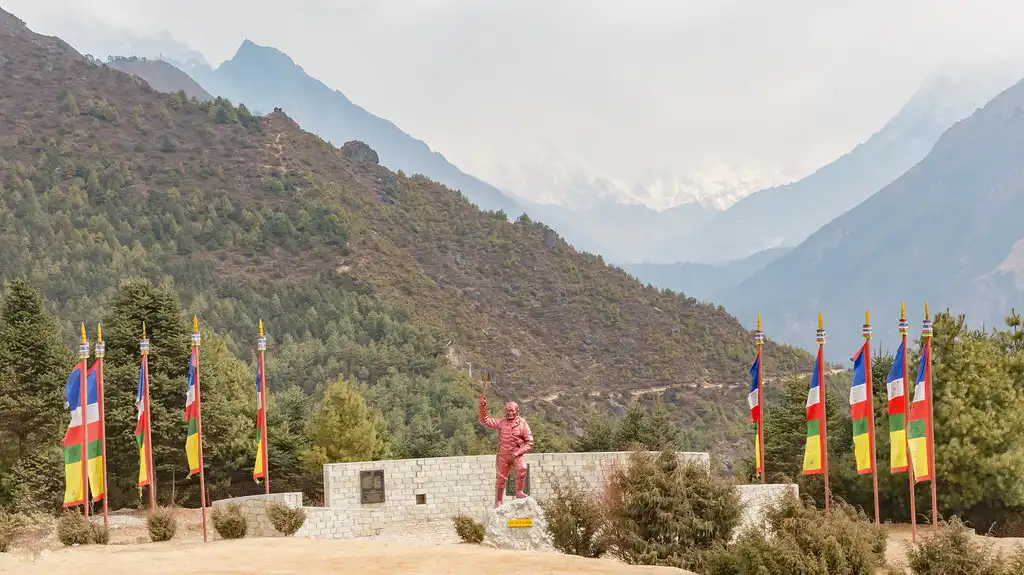
The Sherpa Culture Museum features a section dedicated to the legendary climbers Sir Edmund Hillary and Tenzing Norgay. This exhibit commemorates their historic first ascent of Mount Everest in 1953. It includes photos, personal items, and detailed accounts of their climb, celebrating their remarkable achievement and the pivotal role of the Sherpas in mountaineering history.
A visit to the Sherpa Culture Museum is essential for anyone trekking in the region. It provides a profound understanding of the Sherpa community and their contributions to mountaineering. Exploring the museum enhances your appreciation for the cultural and historical context of your trek, making it a more enriching and meaningful experience.
2. Visit the Local Market
The Saturday Market at Namche Bazaar stands out as the largest market in the region. Traders from lower villages and even as far as Tibet gather here to sell and trade their goods. Tibetans cross the challenging Nangpa La pass to bring Chinese goods and handmade items to barter or sell to the Sherpas.
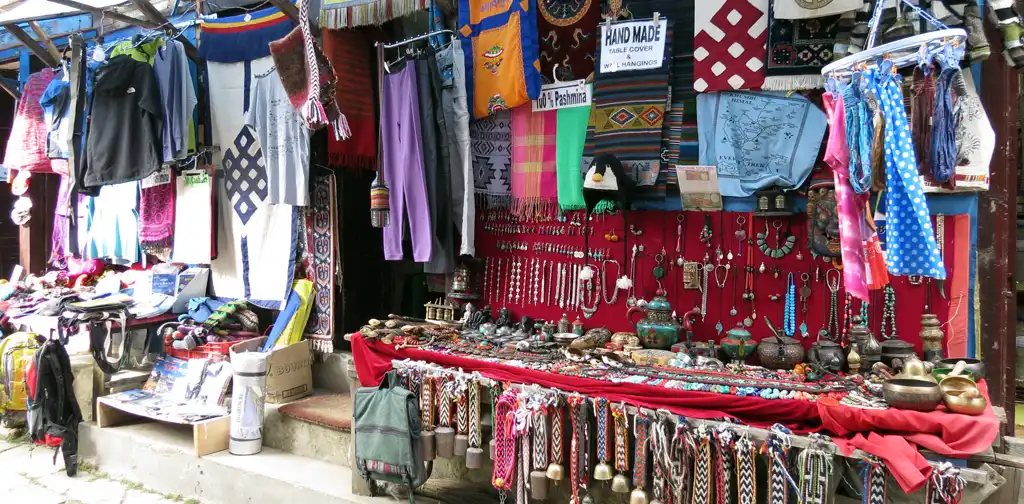
This market attracts most of the Khumbu villagers who come to buy and sell, making it an excellent spot to observe local life and understand the local economy. A wide variety of items are available for sale, including organic vegetables, fresh meat, utensils, clothes, shoes, groceries, yak meat, and cheese. The market operates only on Saturdays, so please plan your visit to Namche Bazaar as you’d like to explore it.
Although the Saturday Market operates only on Saturdays, the main Namche market remains open seven days a week. Shops in the daily market sell trekking gear and equipment, clothes, paintings, souvenirs, and groceries. Remember that items here cost more than in the cities, as mules or porters must transport everything or fly it in.
3. Hike to Everest View Hotel
Start the Hike to Hotel Everest View from Namche Bazaar, traversing lush rhododendron forests and scenic trails. This moderately challenging route suits trekkers with basic fitness levels. As you ascend, you will pass traditional Sherpa villages and interact with locals, enriching your trek with cultural experiences.
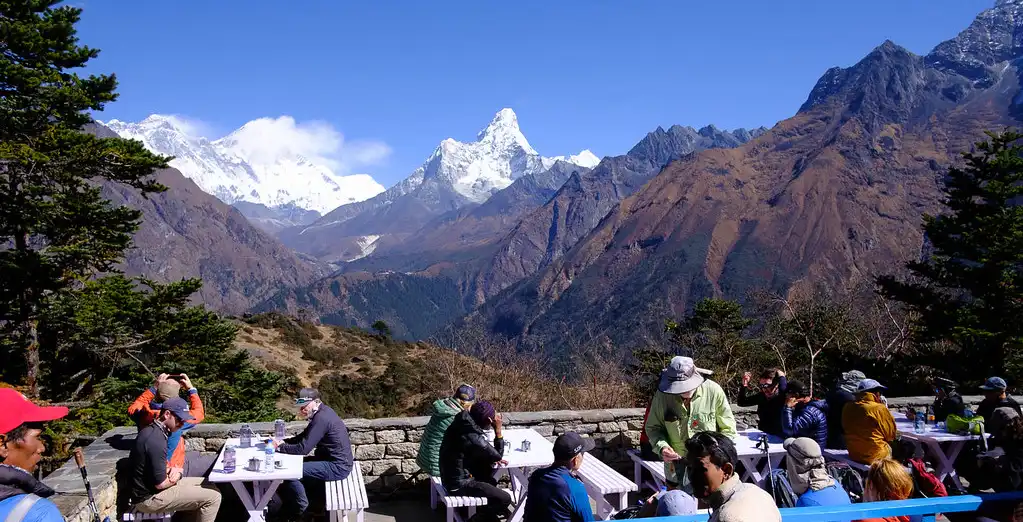
Reach Hotel Everest View to enjoy one of the most stunning Everest viewpoints. The panoramic vista showcases Mount Everest, Lhotse, Ama Dablam, and Thamserku. This location, known for offering some of the best views on the Mount Everest view trek, makes the hike truly rewarding.
Hotel Everest View provides excellent dining and accommodation options, ensuring a comfortable retreat at a high altitude. Enjoy delicious meals while gazing at the incredible mountain scenery. The hotel designers ensured the rooms offer spectacular views, allowing you to wake up to the sights of the Himalayas. This hike combines adventure and comfort, making it a highlight of any trek in the region.
4. Visit the Namche Monastery
The Namche Bazaar Monastery offers significant historical and cultural value. Serving as a spiritual center for the local Sherpa community for centuries, it houses ancient Buddhist artifacts. Visitors can enjoy a serene atmosphere for meditation and reflection, making it a must-visit site in Namche Bazaar.
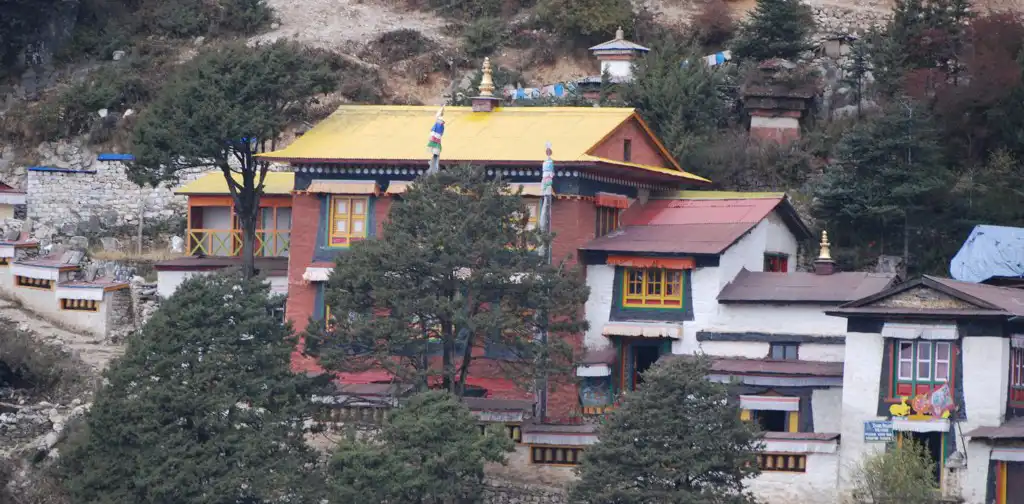
Next to the monastery, the Namche Bazaar Stupa enhances the spiritual ambiance of the area. This intricately designed stupa stands as a testament to the region’s deep-rooted Buddhist traditions. By visiting the stupa, you gain a deeper understanding of the Sherpa people’s spiritual practices and beliefs.
Visit the Namche Monastery early in the morning or late in the afternoon when the light is soft, and the atmosphere is peaceful. During these times, you can witness the monks’ daily rituals and chants, offering a unique cultural experience. Whether seeking spiritual solace or cultural enrichment, the monastery and stupa in Namche Bazaar provide a tranquil retreat amidst the bustling trekking activities.
5. Acclimatization Hikes
To avoid altitude sickness, you need to adjust to the Namche Bazaar height of 3,440 meters physically. Spending more time in Namche Bazaar allows your body to slowly get used to lower levels of oxygen, making your travel enjoyable and not life-threatening because it gives you enough time. However, taking short walks during these times can speed up the acclimatization process.
The hike to Khumjung Village is a highly recommended option for acclimatization. This moderately difficult hike takes you through picturesque landscapes, traditional Sherpa homes, and ancient monasteries. Khumjung Village offers a closer look at the local lifestyle and culture, providing a rewarding and educational experience.
Another excellent acclimatization hike is to the Syangboche Airstrip. This trek involves a steady climb and offers stunning panoramic views of Everest and the surrounding peaks. The Syangboche Airstrip hike not only aids in acclimatization but also provides some of the best scenic vistas in the region, making it a must-do during your stay in Namche Bazaar.
Everest View Trek
Everest Base Camp Short Trek
Annapurna Base Camp Trek
6. Sagarmatha National Park Visitor Centre
The Sagarmatha National Park Visitor Centre in Namche Bazaar holds significant importance due to its establishment. This visitor center serves not only as an information hub but also as a cultural and environmental archive.
The center offers elaborate knowledge of local flora and fauna alongside the rich Khumbu Sherpas’ cultural heritage. It enlightens its guests about the unusual ecological setup of the Everest area, indicating the necessity for its maintenance.
Tourists can gather valuable information about trekking trails, weather conditions, essential gear, and safety and security measures. Additionally, the center offers insights into local customs and traditions, highlighting what makes the area unique.
7. Sagarmatha Next Centre
The Sagarmatha Next Centre represents a significant step towards sustainability in Himalayan tourism. Located at 3,775 meters near Namche Bazaar, along the Syangboche Solukhumbu trekking trails, this center is perfect for environmental enthusiasts and art lovers.

With increased tourism in the Khumbu region, contamination has become a major concern. The Sagarmatha, the next center location, provides an innovative approach to waste management by transforming waste into valuable items rather than merely controlling it. Here, visitors can see exhibitions of art created from waste, participate in workshops on upcycling, and attend informative conferences on climate change.
Visitors can learn about the process of upcycling and participate in creating their pieces. It provides an opportunity to take home unique souvenirs and create lasting memories while promoting environmental sustainability.
8. Namche Bazaar Viewpoint
The Namche Bazaar viewpoint ranks among the best in the Everest region. Trekkers and mountain climbers flock here for its stunning Himalayan views, excellent services, and the gracious hospitality of its people.
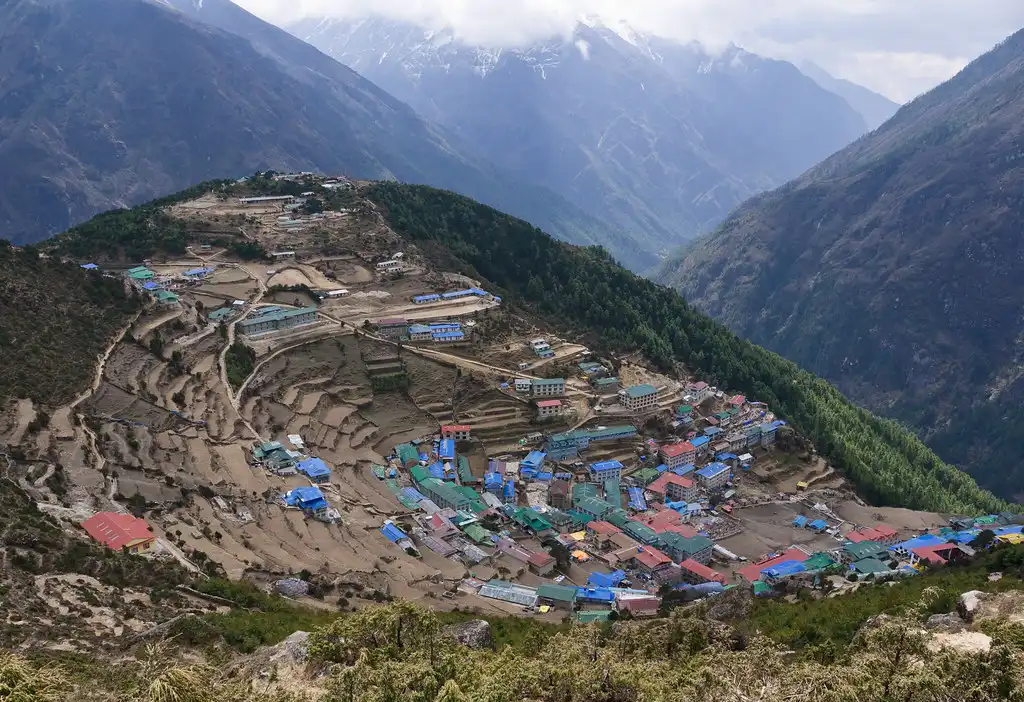
Enjoy a breathtaking view of Mount Everest (8,849 meters), the highest peak in the world, along with other majestic mountains such as Lhotse (8,516 meters), Nuptse (7,861 meters), Ama Dablam (6,812 meters), Kangtega (6,782 meters), and Thamserku (6,608 meters).
At an altitude of 3,440 meters (11,286 feet), Namche Bazaar is a bustling town nestled in the surrounding mountains. Local culture invites visitors to experience a humble and happy lifestyle. In addition, the area has short walks that are ideal for a change to the weather, making Namche Bazaar a complete and rich destination.
9. Enjoy Local Cuisine
Namche Bazaar serves a variety of local dishes that highlight traditional Himalayan cuisine. Trekkers can savor momo (Tibetan dumplings), thukpa (noodle soup), and dal bhat (rice, lentil soup, and vegetable curry), all of which provide nourishment and a taste of local flavors. Another must-try dish is Sherpa stew, a hearty mix of vegetables, potatoes, and meat, perfect for the chilly mountain weather.
Everest Bakery Café is a popular choice for those exploring local dining spots. Known for its fresh bakery items and comforting hot beverages, it provides a cozy spot to relax after a day of trekking. The café also offers stunning views of the mountains, making it a favorite among visitors.
Namche Bazaar Hotel is another highly recommended dining venue. It offers a diverse menu that includes both local and international cuisine, catering to the tastes of a global trekker community. The warm, inviting atmosphere and friendly service make it an ideal place to unwind and enjoy a meal while experiencing the vibrant life of Namche Bazaar.
10. Photography Opportunities
Namche Bazaar offers numerous vantage points to capture the region’s scenic beauty. The Namche Bazaar Viewpoint provides panoramic views of the Himalayas, including Mount Everest, making it perfect for sunrise and sunset photography. The trail leading to Syangboche Airstrip is another excellent spot where photographers can capture sweeping landscapes and vibrant Sherpa life.
Maximize natural light when taking photos in Namche Nepal, especially during the golden hours of early morning and late afternoon. Use a sturdy tripod to stabilize your shots, particularly in windy conditions. Engage with local people and ask for permission before taking their portraits, which shows respect and adds depth and emotion to your photographs.
11. Dumji Festival
The Dumji Festival, celebrated around June or July, is one of the most popular festivals in the Solukhumbu region.
This festival honors the birth anniversary of Guru Rinpoche, also known as Padmasambhava, through various rites and rituals, prayers, dances, and merrymaking.
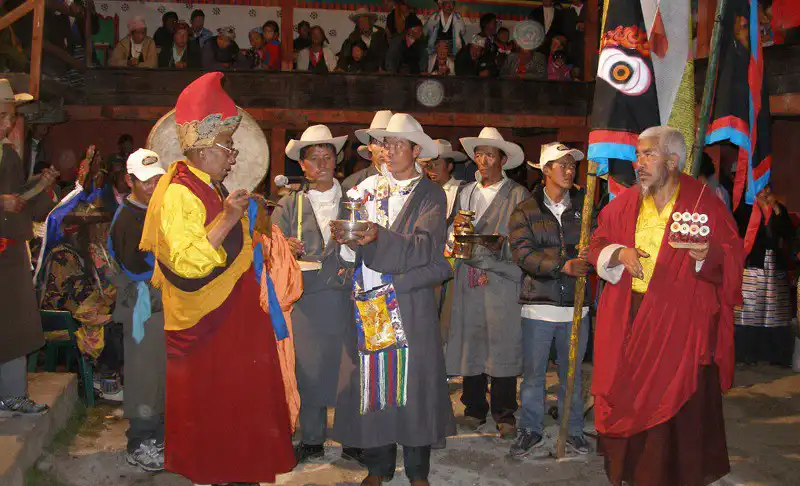
For the Sherpa community, the festival serves as an opportunity to come together and strengthen their bonds of brotherhood. Witnessing this amazing celebration of faith and culture in Namche Bazaar is an experience not to be missed.
12. Khumjung Village
Khumjung, one of the famous villages in the Khumbu Valley, stands out for its people, culture, and breathtaking mountain scenery. Visitors can experience the Sherpa way of life from a unique perspective and experience the warmth and hospitality of the community amidst the breathtaking scenery.
At an altitude of 3,790 meters, Khumjung is a popular acclimatization destination. The village sits on flat land at the foot of the sacred Kumbila Mountain, a few hour’s walk from Namche Bazar. It is an ideal base for trekkers adjusting to altitude before climbing higher in the Himalayas.
Khumjung Village impresses visitors with exceptional vistas of surrounding hills and mountains. The entire village displays remarkable uniformity in color and culture, creating a picturesque and harmonious environment. Key attractions in Khumjung Village include:
1. Khumjung Monastery
Khumjung Monastery, also known as Khumjung Gompa, stands as a historical monument at an altitude of 3,970 meters. This monastery, one of the highest in the Khumbu region, offers panoramic views of the surrounding Himalayan peaks, including Mount Everest.
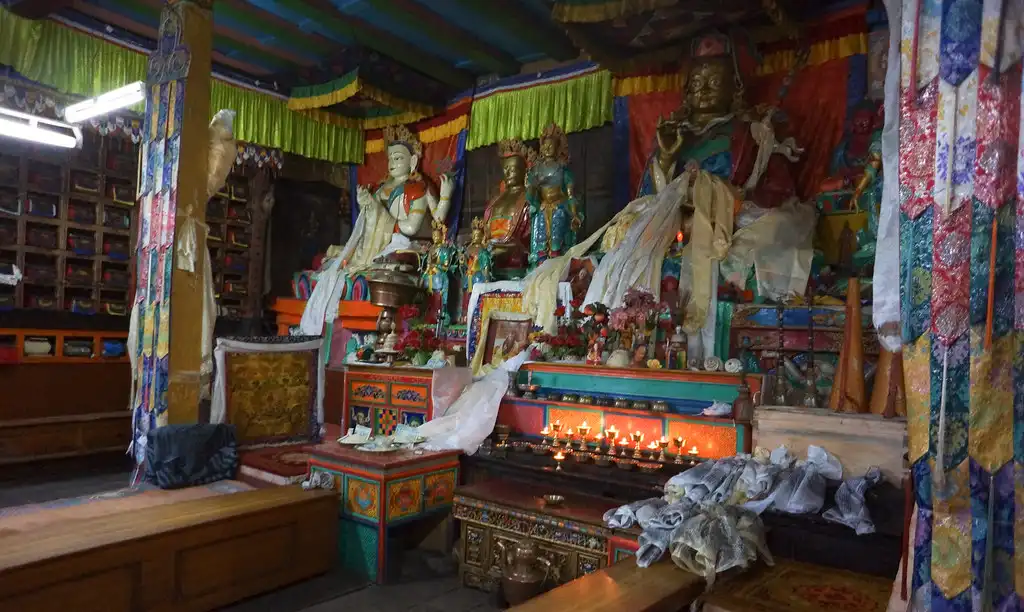
The monastery preserves the region’s religious and cultural artifacts, statues, and a collection of religious texts. The alleged yeti scalp, a notable attraction within the monastery, has intrigued visitors for years. This scalp holds significant cultural importance for the people of Khumjung.
2. Khunde Hospital
Sir Edmund Hillary’s Himalayan Trust established Khunde Hospital in 1966, serving as a vital healthcare facility for both the local population and trekkers. The hospital provides essential medical services and has significantly improved health standards in the Khumbu region.
Visitors can learn about the hospital’s history, its impact on the community, and the ongoing healthcare challenges it addresses. The facility stands as a testament to Sir Edmund Hillary’s enduring legacy and his commitment to the welfare of the Sherpa people.
3. Thame Monastery
Thame Monastery, located a few hours’ trek from Khumjung, is one of the oldest monasteries in the Khumbu region. This ancient monastery is renowned for its beautiful murals and the annual Mani Rimdu festival, which features colorful mask dances and rituals.
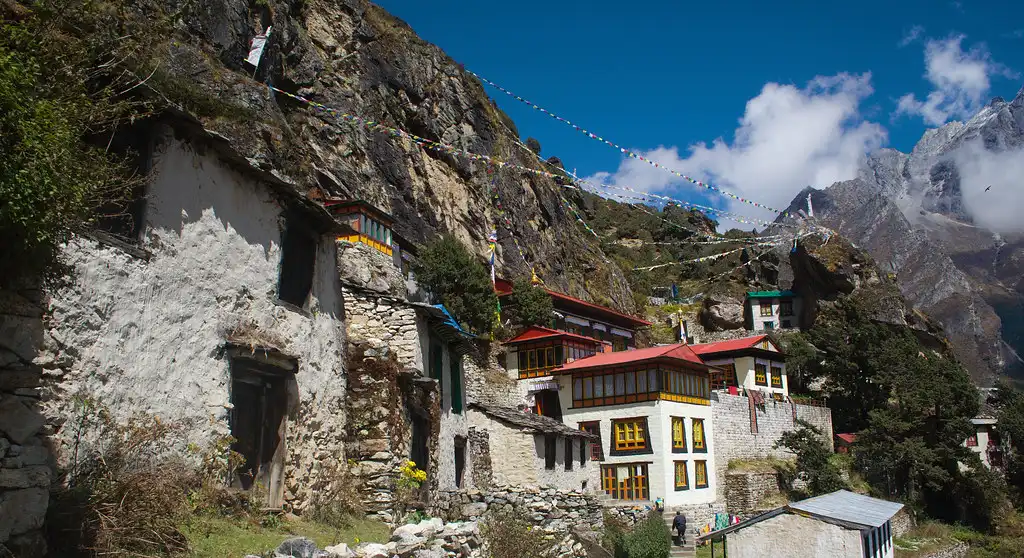
The festival, determined by the Tibetan lunar calendar, draws visitors from all over who come to witness the vibrant cultural performances. The monastery provides stunning views of the surrounding peaks and offers a serene setting for reflection and spiritual exploration.
4. Khunde Monastery
Khunde Monastery, situated in the nearby Khunde village, is another important religious site in the region. Although smaller than Khumjung Monastery, it holds significant cultural and religious value for the local Sherpa community.
Visitors can explore the monastery’s intricate architecture and beautiful murals while enjoying the tranquil environment. The monastery serves as a center for religious rites and ceremonies, allowing guests to observe traditional Buddhist practices in a serene setting.
5. Khunde Village
Adjacent to Khumjung, Khunde Village stands at an elevation of 3,840 meters. Known for its picturesque setting and traditional Sherpa houses, the village offers basic accommodation for trekkers and climbers. Key attractions in Khunde include Khunde Hospital and Khunde Monastery.
The village’s proximity to Mount Everest adds to its appeal, making it an ideal stop for those exploring the region. Visitors can experience the daily life of the Sherpa people, observe their agricultural practices, and enjoy stunning mountain scenery.
6. Hillary Viewpoint
Hillary Viewpoint, located near Namche Bazaar, is a must-visit spot for its scenic beauty and picturesque views of majestic mountains such as Mount Everest, Lhotse, Nuptse, and Ama Dablam.
The viewpoint is an ideal location for day hikes from Namche, Khunde, or Khumjung, offering visitors a chance to capture breathtaking photos and enjoy the serene mountain environment.
7. Hike to Thame
The hike to Thame, a small Sherpa village about 4-5 hours from Namche Bazaar, offers a unique experience of local traditions and beautiful mountain monasteries. The peaceful trail provides some of the best views of the surrounding peaks.
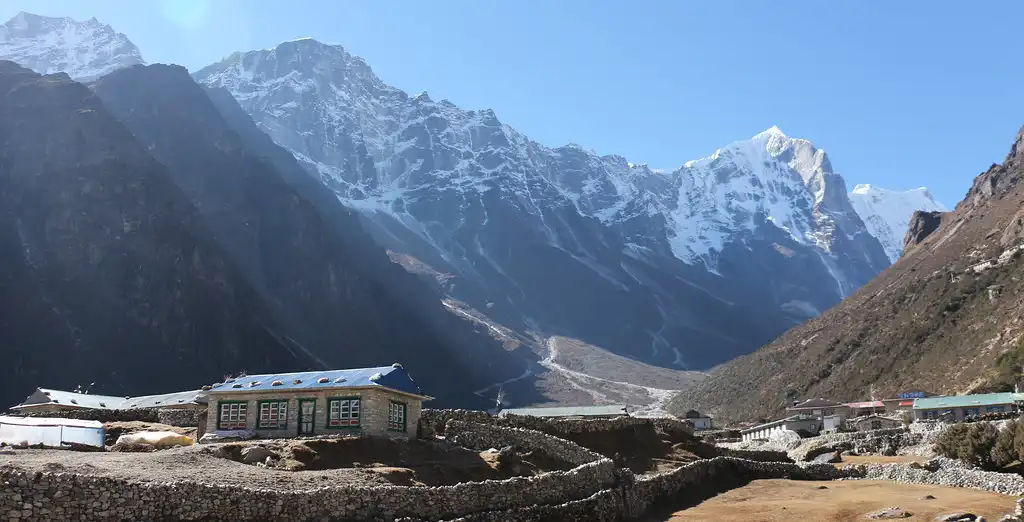
Thame holds historical significance as the childhood home of Tenzing Norgay, the first person to conquer Mount Everest with Sir Edmund Hillary, and Apa Sherpa, who held the record for the most ascents of Mount Everest. It is known for its cultural and religious significance, as well as the Mani Rimdu festival, which includes traditional dances, rituals, and various cultural performances.
Trekking Routes from Namche Bazaar
The highly esteemed Everest Base Camp trek commences at Namche Bazaar. This course will lead you across some of the most fascinating landscapes you can imagine and pass through Sherpa Communities. It also traverses high-altitude terrains, which provide most visitors with the best views of Mount Everest, among other magnificent summits.
For good reasons like getting used to the environment or seeing things, you will always remember this place; hikers usually take about 12-14 days on this trek before heading back home, but only after visiting Tengboche Monastery and Kala Patthar.
Another popular trekking route from Namche Bazaar leads to the Thame Valley. This less-traveled path provides a quieter experience, passing through traditional Sherpa villages and beautiful alpine scenery. The Thame Valley trek is culturally rich, with highlights including Thame Monastery and spectacular views of mountains like Thamserku and Kusum Kanguru.
The trek to Gokyo Lakes offers another excellent option from Namche Bazaar. This route takes trekkers through diverse landscapes, including lush forests, rugged trails, and serene high-altitude lakes. The Gokyo Lakes trek is renowned for its breathtaking views of Cho Oyu and the Ngozumpa Glacier, the largest glacier in Nepal. Trekkers can also climb Gokyo Ri for panoramic vistas of Everest, Lhotse, and Makalu.
Conclusion
Namche Bazaar, nestled in the heart of the Himalayas, offers a variety of unique activities and experiences. You can explore the historical Khumjung Monastery with its mysterious yeti scalp and savor traditional Sherpa cuisine at local eateries.
The village serves as a crucial acclimatization hub for trekkers heading to Everest Base Camp, with stunning vistas accessible from various viewpoints like Hillary Viewpoint and routes leading to breathtaking destinations such as Thame Valley and Gokyo Lakes. Namche Bazaar invites visitors to immerse themselves in its vibrant Sherpa community, rich culture, and stunning natural beauty.
Whether you participate in the colorful Dumji Festival, explore the serene paths to ancient monasteries, or trek to panoramic mountain views, Namche Bazaar offers unforgettable experiences for adventure seekers and culture enthusiasts alike.

